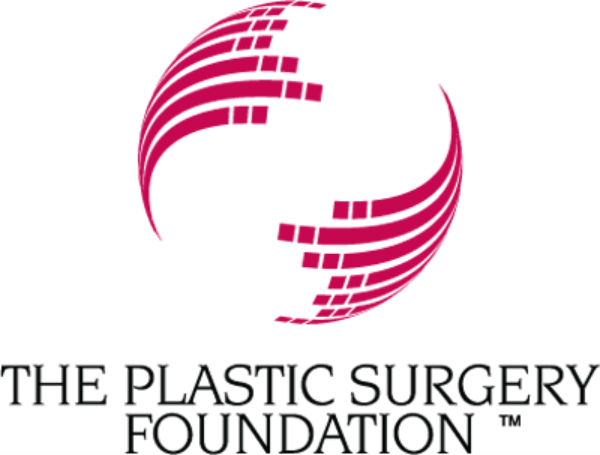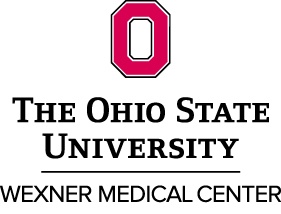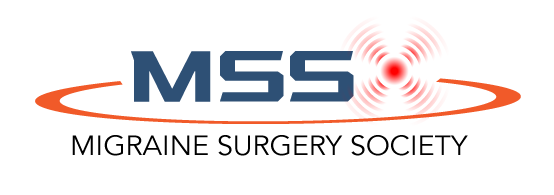When medications aren’t enough
surgery can help
85% to 95%
of patients
Dr. Janis discusses migraine or headache surgery
- The Innovators Documentary
- Anatomical Morphology of the Supraorbital Notch
- Anatomy of the Auriculotemporal Nerve
- Anatomy of the Corrugator Supercilii Muscle: Corrugator Topography
- Anatomy of the Corrugator Supercilii Muscle: Supraorbital Nerve Branching Patterns
- Anatomy of the Greater Occipital Nerve: Implications for Migraine Headaches
- Anatomy of the Supratrochlear Nerve: Implications for the Surgical Treatment of Migraine Headaches
- A Review of Current Evidence in the Surgical Treatment of Migraine Headaches
- Confirmation of Surgical Decompression to Relieve Migraine Headaches (Discussion)
- Five-Year Outcome of Treatment of Migraine Headaches (Discussion)
- Migraine Surgery
- Morphometric Evaluation of the Frontal Migraine Trigger Site
- My Headache’s Gone and My Skin is Smooth (D Magazine)
- Neurovascular Compression of the Greater Occipital Nerve
- Neurotoxins: Expanding Uses of Neuromodulators in Medicine—Headache
- Occipital Artery Vasculitis not Identified as a Mechanism for Migraine Headaches
- Placebo-Controlled Surgical Trial of the Treatment of Migraine Headaches (Discussion)
- Supraorbital Rim Syndrome: Definition, Surgical Treatment, and Outcomes for Frontal Headache
- The Anatomy of the Greater Occipital Nerve (Part 2)
- The Current Means for Detection of Migraine Headache Trigger Sites
- The Lesser and Third Occipital Nerves and Migraine Headaches
- The Zygomaticotemporal Branch of the Trigeminal Nerve: Part II
- Validation of the Peripheral Trigger Point Theory of Migraine Headaches
- What is Migraine Surgery?
- ASPS Policy Statement on Migraine Surgery
- A Comparison of Outcome of Surgical Treatment of Migraine Headaches Using a Constellation of Symptoms versus Botulinum Toxin Type A to Identify the Trigger Sites
- Anatomical Study of the Lesser Occipital Nerve and Its Potential Compression Points: Implications for Surgical Treatment of Migraine Headaches
- Anatomical Variations of the Occipital Nerves: Implications for the Treatment of Chronic Headaches
- Comprehensive Surgical Treatment of Migraine Headaches
- Comprehensive Criteria for Differential Diagnosis and a Surgical Management Algorithm for Occipital Neuralgia and Migraine Headaches
- Confirmation of Surgical Decompression to Relieve Migraine Headaches
- Corrugator Supercilii Muscle Resection and Migraine Headaches
- Efficacy of Surgical Treatment of Migraine Headaches Involving the Auriculotemporal Nerve (Site V)
- Five-Year Outcome of Surgical Treatment of Migraine Headaches
- Factors Contributing to Migraine Headache Surgery Failure and Success
- In-Depth Review of Symptoms, Triggers, and Treatment of Temporal Migraine Headaches (Site II)
- Indications and Outcomes for Surgical Treatment of Patients with Chronic Migraine Headaches
- Introduction to VSI: Migraine surgery in JPRAS open
- Migraine Surgery: A Plastic Surgery Solution for Refractory Migraine Headache
- Migraine Surgery Practice Patterns and Attitudes: Implications for Migraine Headaches
- Minimally invasive nerve and artery sparing surgical approach for temporal migraines
- Neurovascular Compression‑Induced Intracranial Allodynia May Be the True Nature of Migraine Headache
- Nonpharmacologic Treatments for Chronic and Episodic Migraine: A Systematic Review and Meta-Analysis
- Outcome Comparison of Endoscopic and Transpalpebral Decompression for Treatment of Frontal Migraine Headaches
- Placebo-Controlled Surgical Trial of the Treatment of Migraine Headaches
- Positive Botulinum Toxin Type A Response Is a Prognosticator for Migraine Surgery Success
- Refractory occipital neuralgia treatment with nerve decompression surgery: a case series
- Surgical Options for Migraine: An Overview
- Surgical Treatment of Migraines by Corrugator Muscle Resection
- Surgical Treatment of Migraine Headaches
- Surgical Treatment of Migraine Headache: Back to the Future
- The Auriculotemporal Nerve in Etiology of Migraine Headaches
- The importance of surgical maneuvers during treatment of frontal migraines (site I): A prospective, randomized cohort study evaluating foraminotomy/fasciotomy, myectomy, and arterectomy
- Therapeutic Role of Fat Injection in the Treatment of Recalcitrant Migraine Headaches
- The Role of the Third Occipital Nerve in Surgical Treatment of Occipital Migraine Headaches
- The Zygomaticotemporal Branch of the Trigeminal Nerve: An Anatomical Study
- Treatment of dopplerable nummular headache with minimally invasive arterectomy under local anesthesia
Migraine headaches are one of the most vexing and debilitating disorders, with over 35 million Americans experiencing migraine headaches. As a matter of fact, migraine headaches are more common than asthma and diabetes combined, affecting 18% of women and 6% of men, with one in 4 households having at least one person who experiences migraine headaches. The cumulative lifetime incidence of migraine headaches is an astonishing 43% in women and 18% in men. Simply put, it is the single most debilitating neurologic disorder, and is the 5th leading cause of visits to the emergency room annually with 4 million visits.
A full one third of patients are not helped by standard traditional therapies, specifically medications designed to either prevent migraine headaches before they start, or those that are designed to relieve symptoms once a migraine has begun. As a matter of fact, 71% of migraine sufferers in the United States are not completely satisfied with their usual acute medical treatment, citing such reasons as delayed and/or incomplete pain relief. Even the most efficacious medications only reduce migraine severity and frequency rather than eliminate them. While these medications may have advantages, they also have disadvantages, including the need to be taken on a regular basis, expense (even with co-pays), and the time it takes for these medications to take effect. They also can have side effects including drowsiness, weight gain, hair loss, and difficulty in concentration or memory issues. Some of these medications, in fact, are contraindicated with certain conditions such as pregnancy, history of coronary artery disease, or stroke. Despite the fact that over 6 million prescriptions are written each year for anti-migraine drugs, over 112 million collective workdays are still lost per year because of migraine headaches, reflecting at least $17 billion in loss of economic productivity. The direct cost of treating migraine headache, excluding over-the-counter medications, is over $1 billion each year, and annual direct cost estimates of migraine treatment can extend to over $7,000 per patient per year.
Alternative forms of treatment include acupuncture, menthol patches, electrical stimulation, magnesium, infusions, massage therapy, chiropractor treatment, and biofeedback, amongst others. Many of these do not have a track record of scientific success with solid data to support their use. However, since the year 2000, there has arisen an innovative surgical technique that can be used to treat patients with chronic migraine headaches. This initially involves the use of botulinum toxin (Botox) and/or nerve blocks to determine whether a patient may, in fact, have “trigger points”, or peripheral nerves of the head and neck that may be compressed by surrounding tissue, including muscle, fascia, bone, or even blood vessels. If it is determined that a patient has a peripheral trigger point, that patient may be a candidate for surgical intervention, specifically a technique used to identify and decompress (or in some cases, ablate) these nerves. This concept and technique have a tremendous amount of data to support its efficacy, safety, and outcomes, with over 30 studies published in peer review journals, and the number increasing on a regular and steady basis. This includes retrospective studies, prospective pilot studies, prospective randomized controlled studies, sham surgery studies, and five-year follow-up studies. These results are also reproducible with at least 5 centers demonstrating that this technique has strong benefit in these patients, including Ohio State University. As a matter of fact, Dr. Jeffrey Janis serves as the Principal Investigator of an IRB-approved multicenter prospective trial on this, as well.
Economically, analyses have been performed specifically looking at the impact of this technique on the healthcare system. In 2012, a paper was published that demonstrated the following economic benefits:
• Migraine medication expenses were reduced by a median of $1,997.26 annually.
• Median cost reduction for alternative treatment expenses was $450 annually.
• Patients had a median of three fewer annual primary care visits for the migraine headache treatment, resulting in a median cost reduction of $320 annually.
• Patients missed a median of 8.5 fewer days of work or childcare annually postoperatively, with a median regained income of $1,525.
• The median total cost spent on migraine headache treatment was $5,820 per year preoperatively, declining to $900 per year postoperatively.
• Total median cost reduction was $3,949.70 per year postoperatively.
• Significant improvements were demonstrated in all aspects of the Migraine-Specific Quality of-Life Questionnaire and the Migraine Disability Assessment questionnaire.
There are very few surgeons who are performing this type of surgery with any sort of significant volume, and there is only one person in this country who has been performing this technique and publishing in this field longer than Dr. Janis, and that is the person who grandfathered the concept and technique. Dr. Janis trained with him as a medical student and has worked with him on anatomic and clinical studies since 2002. There is no one in Central Ohio who has the expertise or experience in this field of migraine surgery, and this is one of the main reasons he was recruited to The Ohio State University.
Patients are treated using an individualized approach but using a multidisciplinary concept. Dr. Janis will only see patients who have been officially diagnosed by a board-certified neurologist. Through the use of history and physical exam combined with the diagnostic modalities of botulinum toxin and/or nerve blocks, as described above, Dr. Janis will isolate or pinpoint the possible peripheral trigger points that the patient has which may be contributing to their migraine symptoms. The patients will then potentially be offered surgical intervention, which can take the form of multiple procedures, all performed in an outpatient setting. The types of procedures performed within that operation are dictated by the number and location of trigger points that are diagnosed in a clinic setting. Dr. Janis has proven results in this field when he was at the University of Texas Southwestern Medical Center as well as at Ohio State University Wexner Medical Center since his arrival in 2013. Among his patients who responded to surgery, average improvement from baseline levels was 96.9 percent. Among the entire patient population, average improvement was 78.2 percent from baseline. This is far more effective than traditional treatments, and reflects a significant impact and improvement on patient’s quality of life that is durable over time.
Learn more about migraine surgery at The Ohio State University
Learn more about migraine surgery at the Migraine Surgery Society
Learn more about migraine surgery at American Society of Plastic Surgeons




